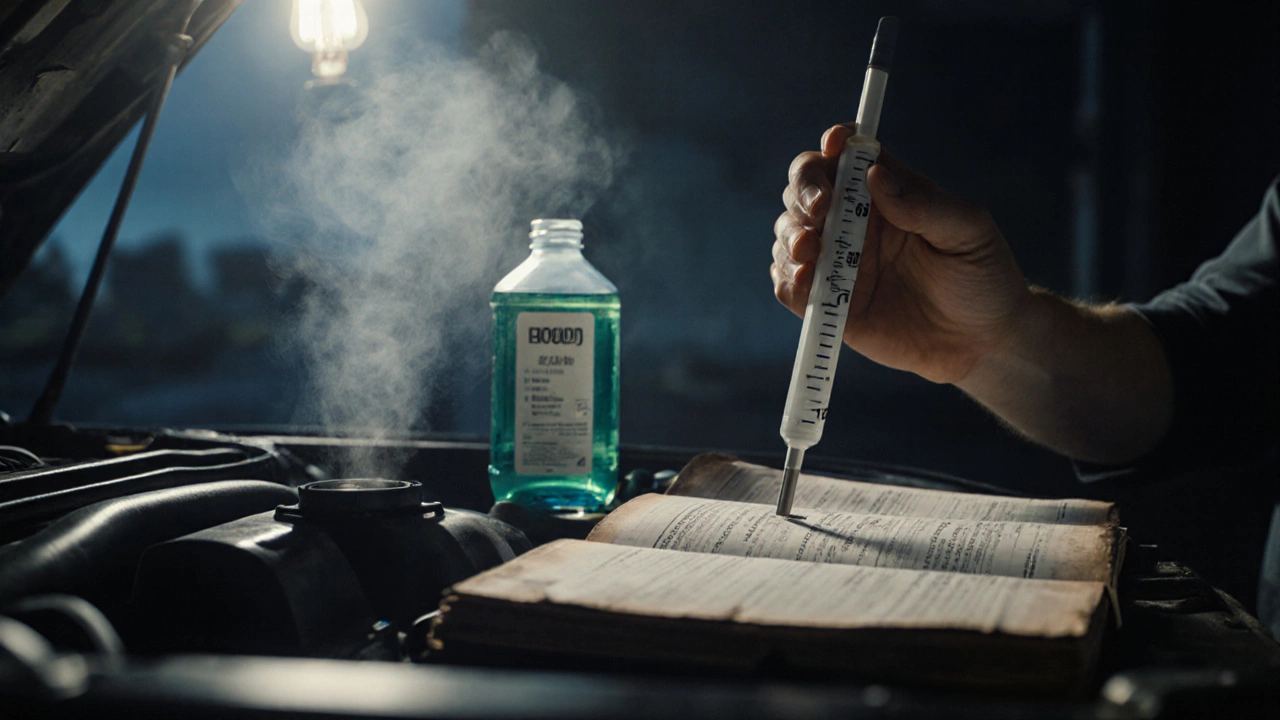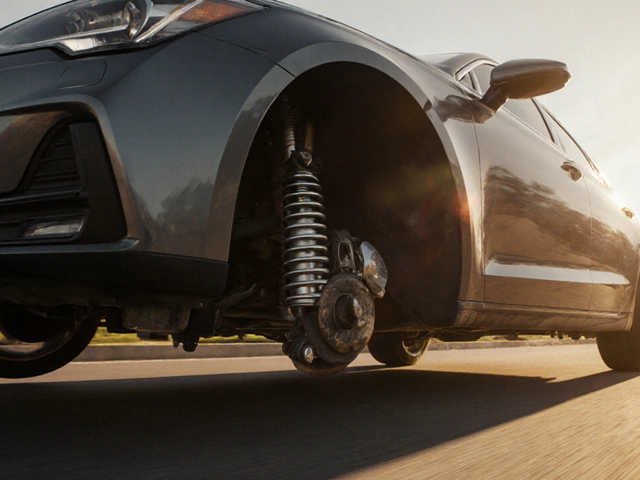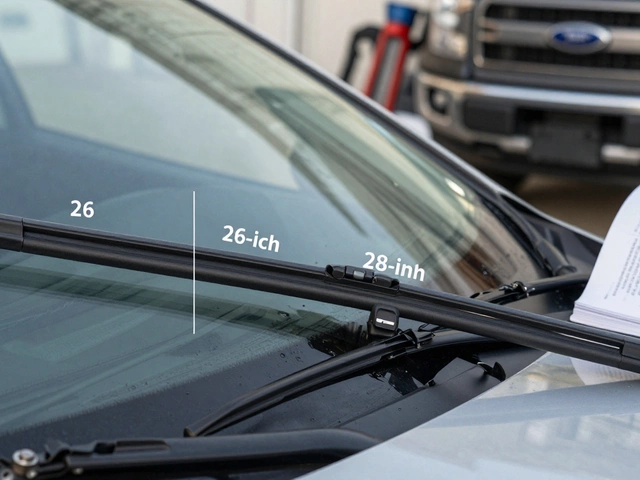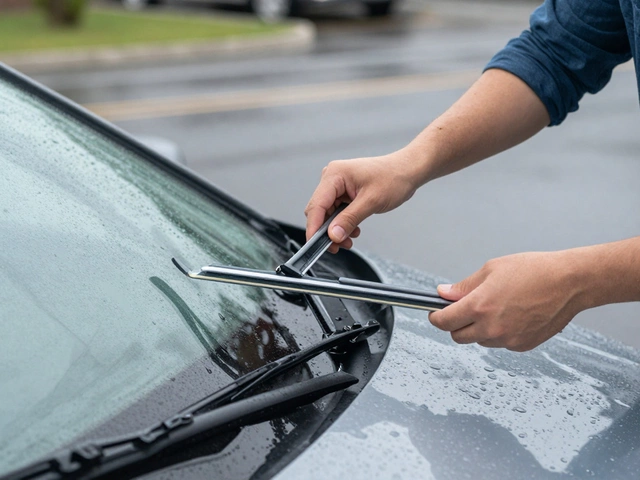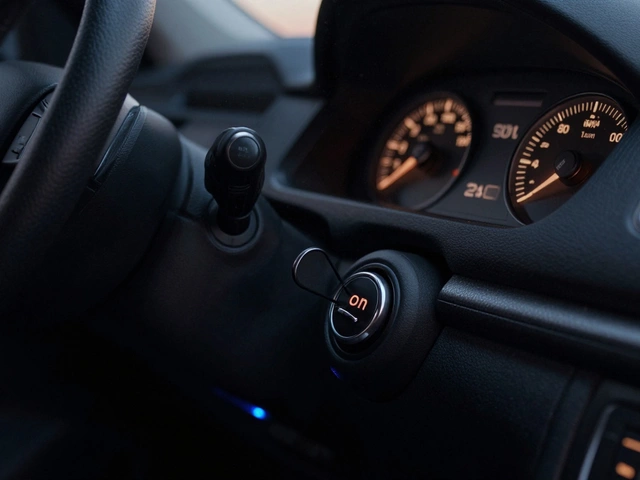Oil Addition Calculator
Vehicle Information
Safe Oil Addition Guidelines
Modern engines require precise oil levels. The article explains that overfilling can cause serious damage including:
- Oil foam leading to poor lubrication
- Blown seals and gaskets
- Carbon buildup in turbocharged engines
Results
Key Safety Notes
As explained in the article:
- Modern engines don't consume oil normally—drop between changes indicates leaks or wear
- Never mix synthetic with conventional oil except in emergencies
- Check oil when engine is cold and car is on level ground
- Always use the exact oil viscosity and specification listed in your owner's manual
- If you're consistently low on oil between changes, have the vehicle inspected
You notice the oil light flickers. Or maybe your dipstick shows barely a trace. You grab a bottle of oil from the garage and pour it in. Feels like a quick fix, right? But here’s the truth: adding oil to your car isn’t always the right move-and doing it wrong can cost you thousands.
Why People Think Adding Oil Is Fine
Most drivers assume engine oil is like coffee: if it’s low, just top it up. And in theory, that makes sense. Oil gets burned off over time. Small leaks happen. The engine uses a bit with every mile. So why not just add more? It’s a habit passed down from older generations. Back when cars were simpler and oil consumption was predictable, topping off worked. But modern engines? They’re precision machines. And modern oil? It’s not just grease-it’s a complex blend of additives designed to protect, cool, and clean under extreme heat and pressure.When Adding Oil Is Actually Safe
There are times when adding oil is perfectly fine-and even necessary. If your oil level is below the minimum mark on the dipstick, and you’re not due for a full oil change, topping off with the correct type is a temporary fix. Here’s how to do it right:- Check the oil when the engine is cold and the car is on level ground.
- Use the exact viscosity and specification listed in your owner’s manual (e.g., 5W-30 API SN+).
- Only add what’s needed-usually no more than a quart at a time.
- Wait 5 minutes after adding, then recheck the dipstick.
- Never mix synthetic with conventional oil unless it’s an emergency.
The Hidden Danger of Overfilling
One of the most common mistakes? Pouring in too much. People think “more is better.” It’s not. Overfilling by even half a quart can cause serious damage. Here’s why:- Excess oil gets whipped into foam by the spinning crankshaft. Foamy oil doesn’t lubricate-it just splashes around.
- Oil foam leads to poor lubrication, overheating, and accelerated wear on bearings and camshafts.
- Too much pressure can blow out seals and gaskets, leading to leaks you didn’t have before.
- In turbocharged engines, excess oil can be forced into the intake system, causing carbon buildup and even engine fires.
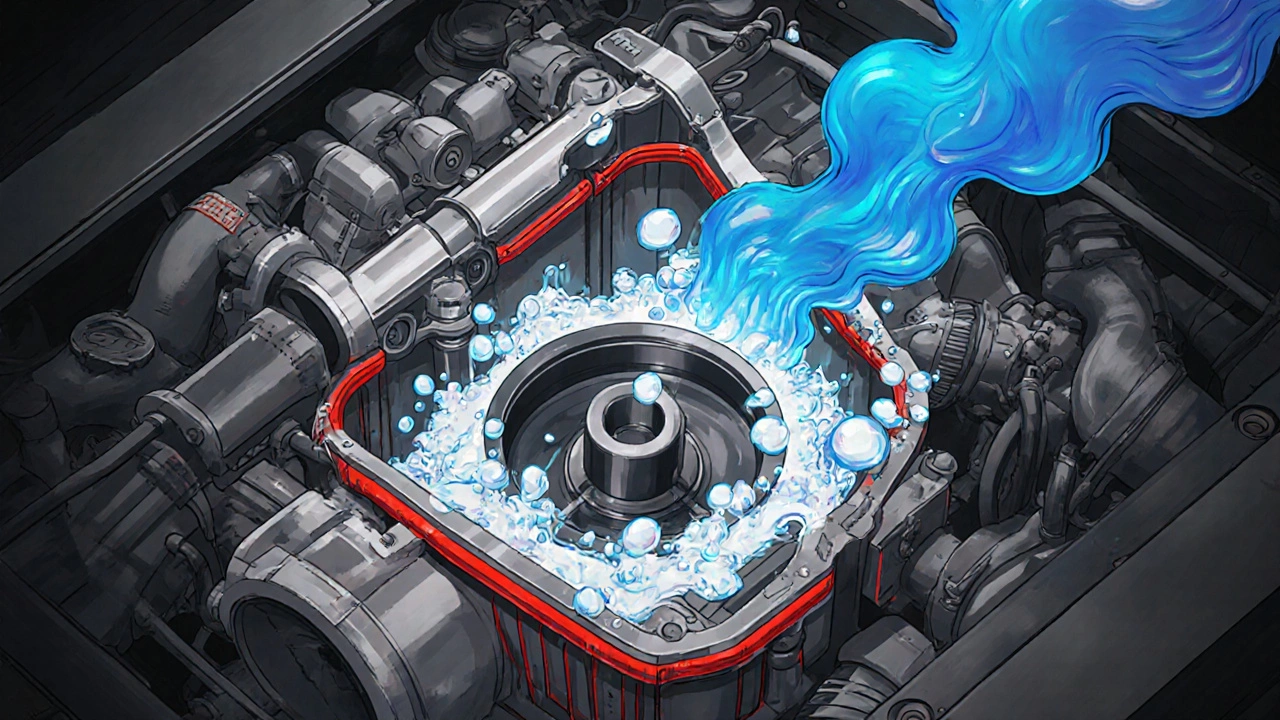
What Happens When You Use the Wrong Oil
Not all oils are created equal. You can’t just grab the cheapest bottle at the gas station and call it a day. Modern engines require specific formulations:- Full synthetic vs. conventional: Synthetic flows better in cold weather and resists breakdown longer.
- API rating: Look for SN, SP, or CK-4-these indicate meeting current industry standards.
- ACEA ratings: Common in European cars (e.g., A3/B4).
- Manufacturer approvals: BMW Longlife, Mercedes-Benz 229.5, VW 502.00-these are non-negotiable for warranty compliance.
Signs You’re Not Just Low on Oil-You’re in Trouble
If you’re regularly adding oil, it’s not a maintenance habit. It’s a warning sign. Here’s what to watch for:- Blue smoke from the exhaust-burning oil from worn piston rings or valve guides.
- Oil spots under the car-leaking gasket, seal, or filter.
- Oil pressure warning light coming on even after topping up.
- Engine noise-ticking or knocking that gets louder after driving.
- Oil smell inside the cabin-possible leak into the HVAC system.

What to Do Instead of Just Adding Oil
If your oil level is low, don’t panic. Do this:- Check the dipstick properly-wipe it, reinsert, then check again.
- Look under the car for wet spots or drips.
- Check the oil cap for creamy sludge-that’s coolant mixing with oil, meaning a head gasket leak.
- Look at the tailpipe for soot or blue smoke.
- If you’re under 1,000 miles from your next oil change, add a quart if needed and plan the change.
- If you’re more than halfway to your next change and you’re down a quart or more, get it checked.
How Often Should You Really Change Oil?
The old rule-every 3,000 miles-is dead. Most modern cars can go 7,500 to 10,000 miles between changes, depending on oil type and driving conditions. But here’s the catch: if you’re topping off oil every 1,500 miles, you’re not saving money-you’re delaying a real repair. An oil change costs $50-$100. A rebuilt engine? $3,000-$7,000. Use your car’s oil life monitor if it has one. If not, follow the manufacturer’s schedule in the manual. And if you drive in extreme heat, dusty roads, or stop-and-go traffic, cut the interval by 20%.Bottom Line: Add Oil Only as a Temporary Fix
Adding oil to your car isn’t wrong-it’s just not the solution. It’s a bandage on a broken bone. You’re not fixing the problem. You’re just keeping the engine running long enough for it to fail in a more expensive way. If your oil level drops between changes, get it checked. Don’t ignore it. Don’t assume it’s normal. Modern engines don’t consume oil-they consume money when you neglect them. The next time you reach for that oil bottle, ask yourself: Am I topping up-or just postponing the inevitable?Can I just add oil instead of changing it?
No. Adding oil doesn’t remove dirt, sludge, or metal particles that build up over time. Old oil loses its protective additives and becomes abrasive. A full oil change replaces all the oil and filters out contaminants. Topping off just dilutes the bad oil with new oil-it doesn’t fix the problem.
How much oil should I add at a time?
Add oil in small amounts-no more than half a quart at a time. Wait a few minutes after adding, then recheck the dipstick. Most engines hold between 4 and 8 quarts total. Going over the max line can cause serious damage. If you need more than a quart between changes, you have a leak or internal issue.
What happens if I put the wrong oil in my car?
Using the wrong oil can cause poor lubrication, reduced fuel economy, and engine damage. For example, using 10W-40 in a car that needs 0W-20 can cause the oil to be too thick to flow properly at startup, leading to increased wear. It can also void your warranty. Always match the viscosity and specification in your owner’s manual.
Why is my car losing oil without a leak?
If there’s no visible leak, the oil is likely being burned. Worn piston rings or valve seals let oil enter the combustion chamber and burn with the fuel. This shows up as blue smoke from the exhaust and a drop in oil level between changes. It’s a sign of engine wear that needs professional diagnosis.
How do I know what type of oil my car needs?
Check your owner’s manual. It will list the exact viscosity (like 5W-30) and API or ACEA rating (like SP or A3/B4). Some cars also require manufacturer-specific approvals (e.g., BMW Longlife). If you don’t have the manual, look up your car’s make, model, and year on the oil manufacturer’s website-they have online lookup tools.
